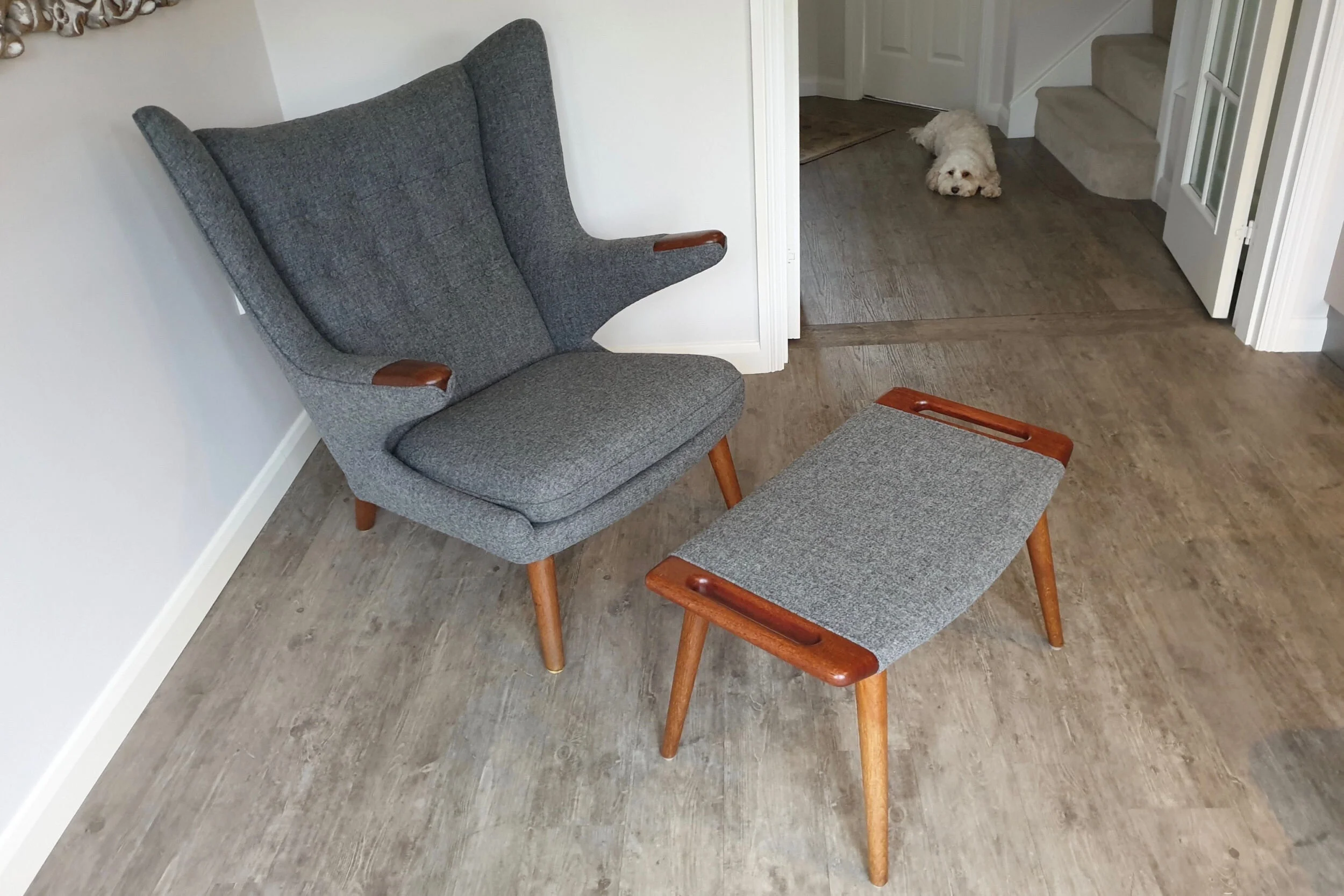Upholstery
Upholstery is all about the “top fabric” right? Wrong! Upholstery to an upholsterer is all about what’s underneath the top fabric.
Traditionally, pre 1950, upholstered pieces of furniture are layered using naturally occurring materials, such as cotton and linen webbings, hessian, ginger coir, pig/cattle hair, cattle tail, horsehair, linen scrim, cotton wadding and flax twines. These materials are typically layered over lashed springs, stitched and tacked into place using years of practice, skill and knowledge to reproduce an authentic piece that should last another 60 years.
As we move post 1950, into the development of foams, poly wadding, zig zag springs and sprung units, we transition into modern techniques of upholstery, allowing the development of more curved and mass produced furniture. Skill and knowledge are still required when using these materials, but costs are reduced as less time consuming techniques can be used.
It can be argued that you could use traditional or modern materials on any piece of furniture. Personally, I will always strive to reproduce any upholstery to its original form. Designers would instinctively take into account the upholstery when designing their framework, and vice versa to achieve the finished style. Once the structure has been achieved, furniture can then be personalised with your own choice of “top fabric”.
I practise both forms of upholstery. I also design my own pieces of furniture, using either traditional or modern techniques. However, I really enjoy using naturally occurring materials that will not damage our environment further. I am always looking for, and experimenting with, recycled and natural materials to replace some of the damaging modern alternatives.








